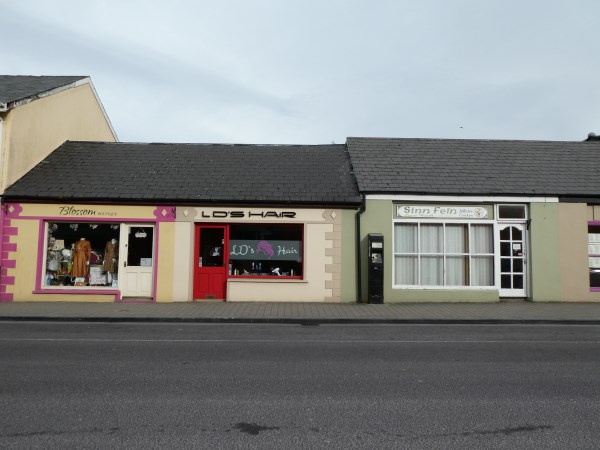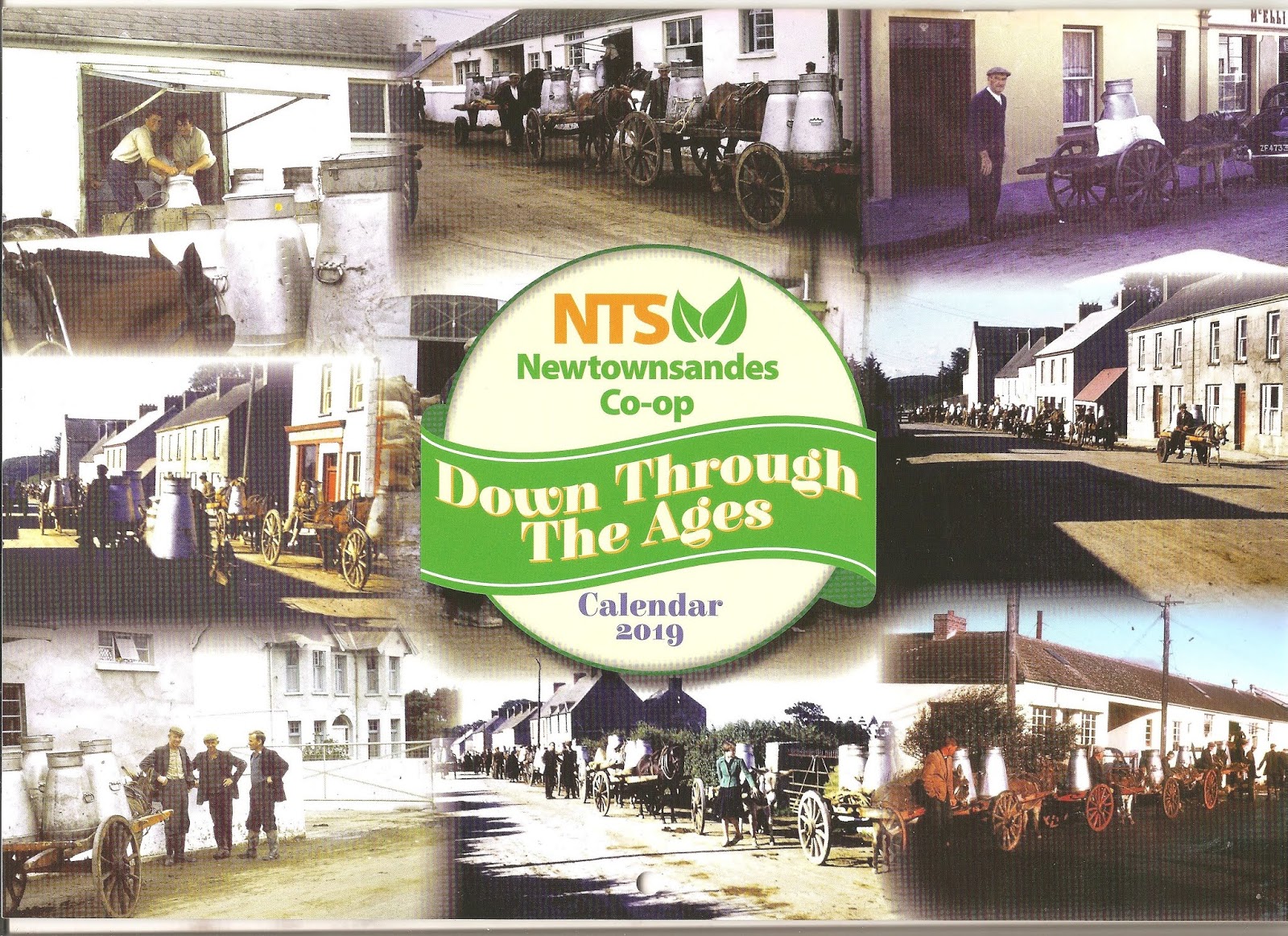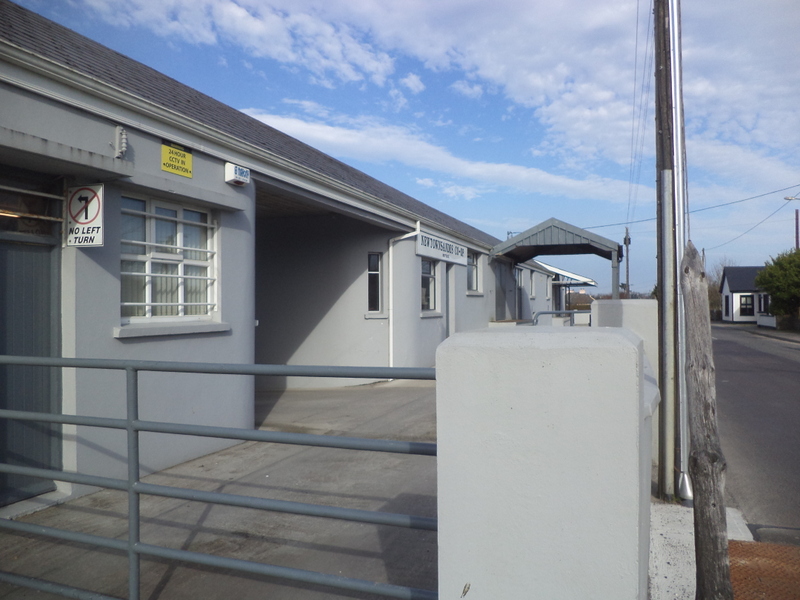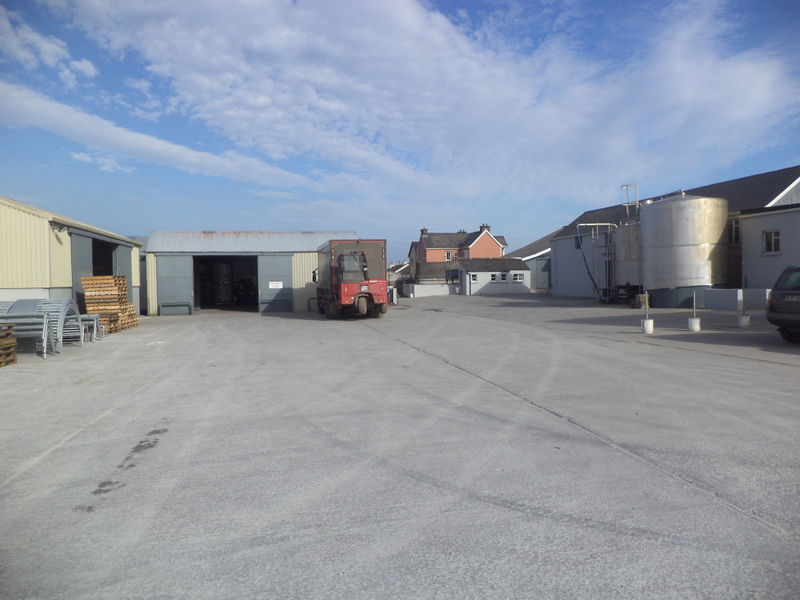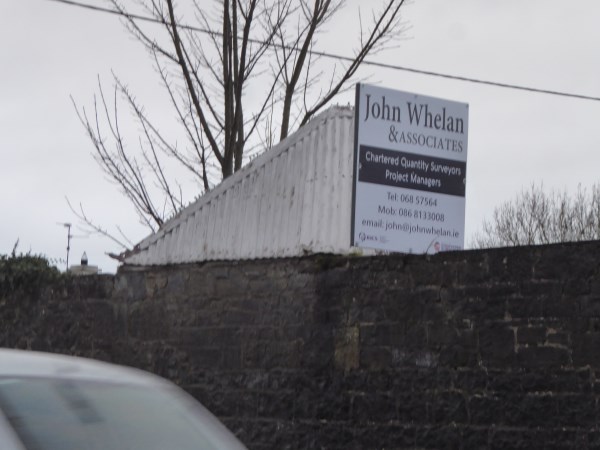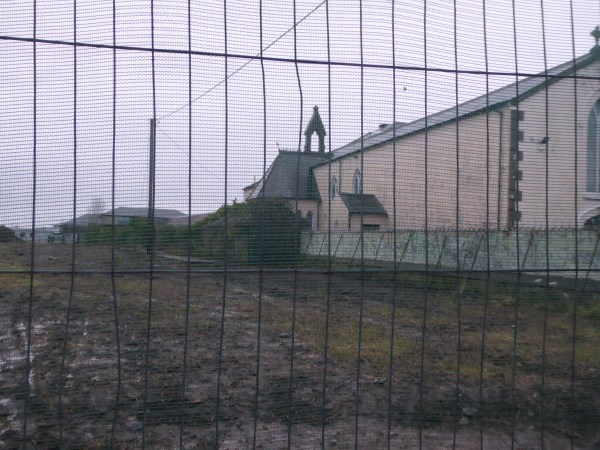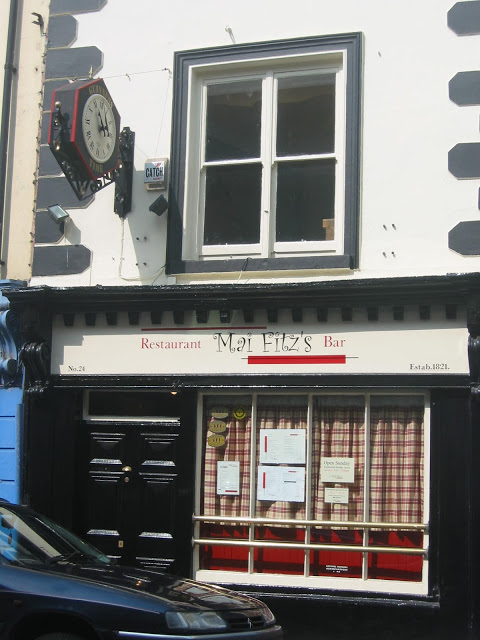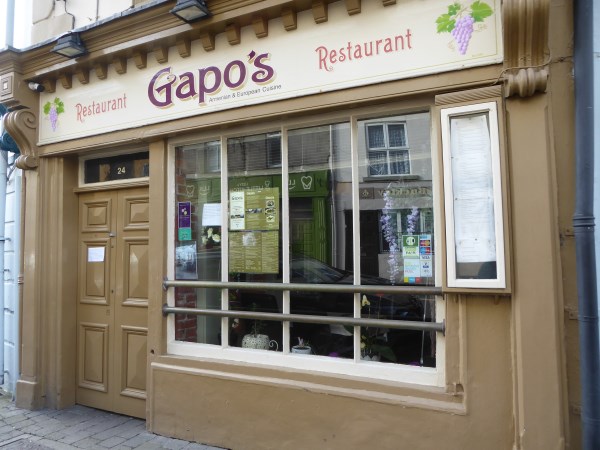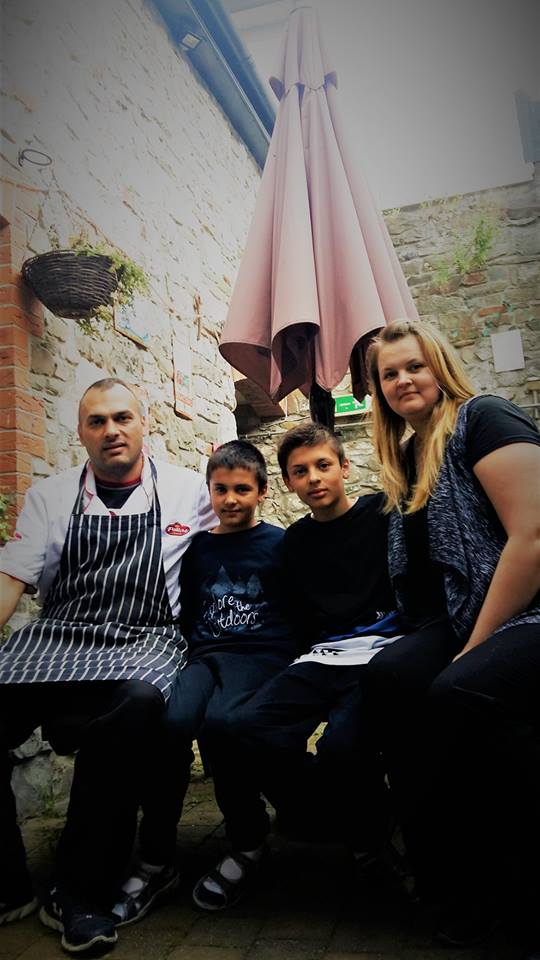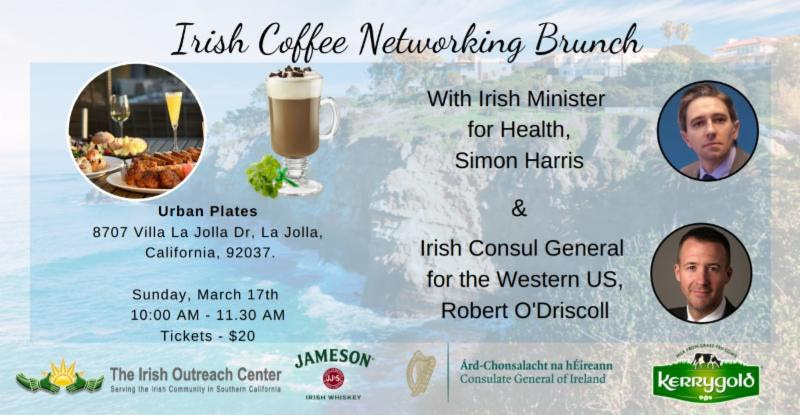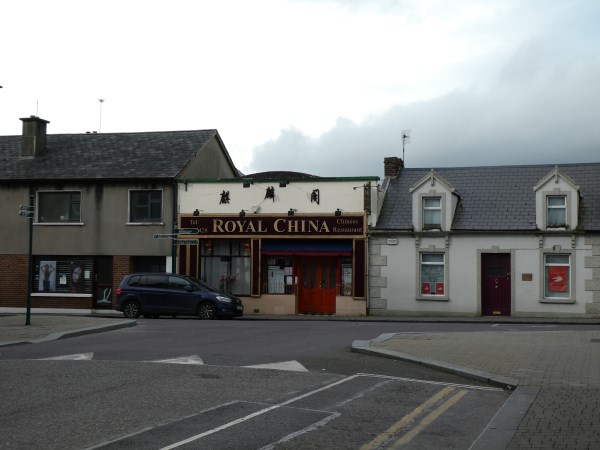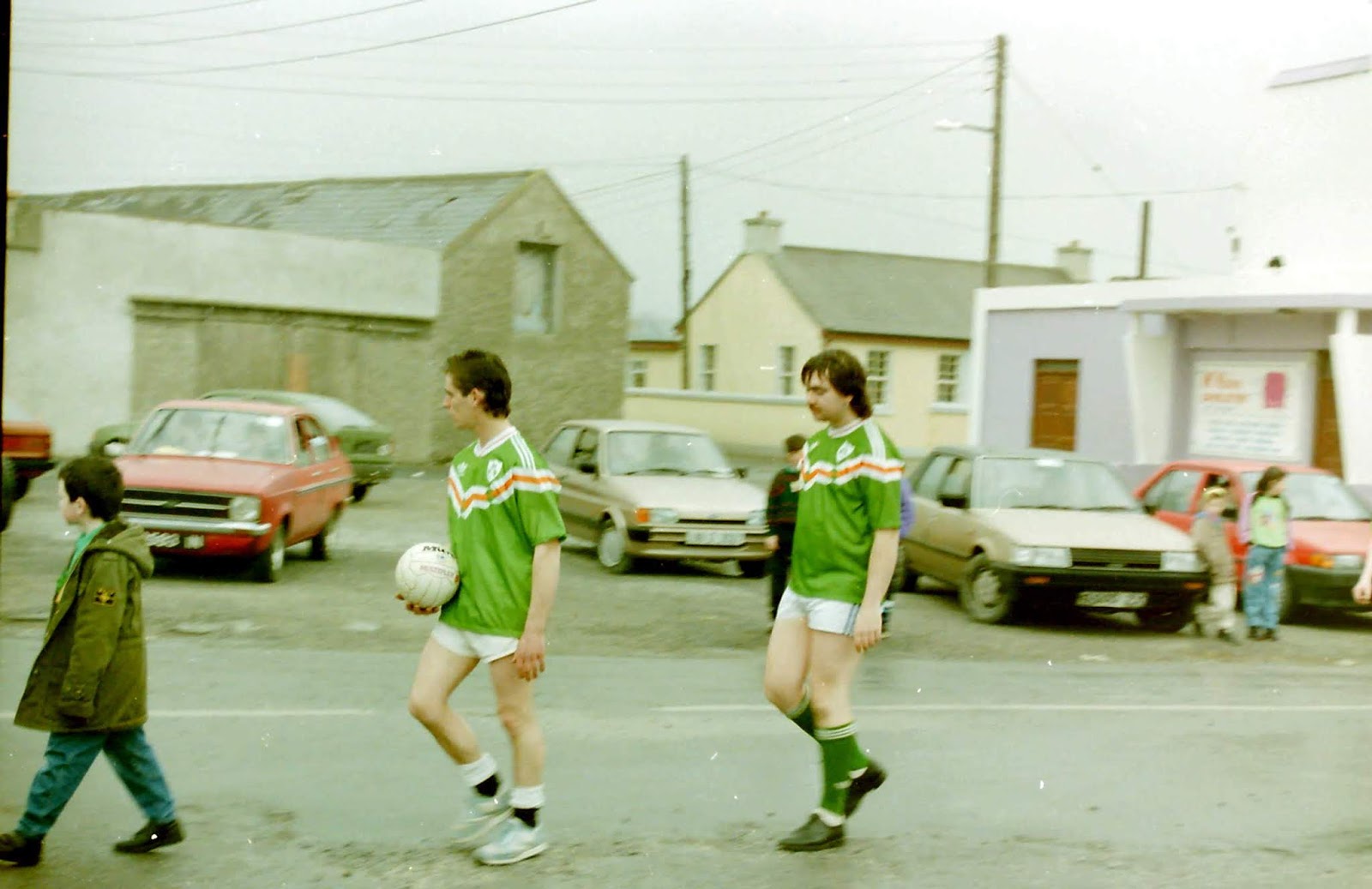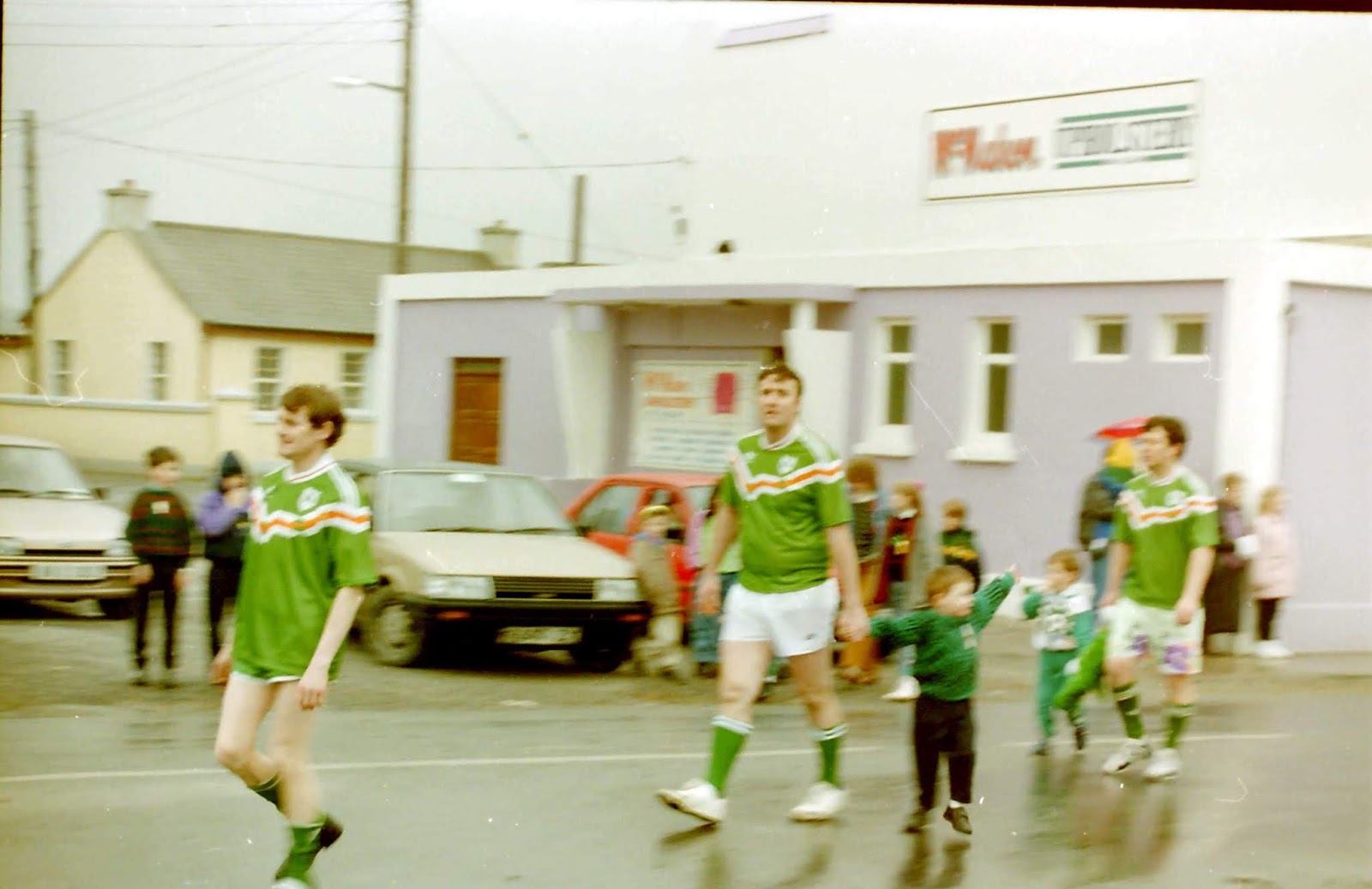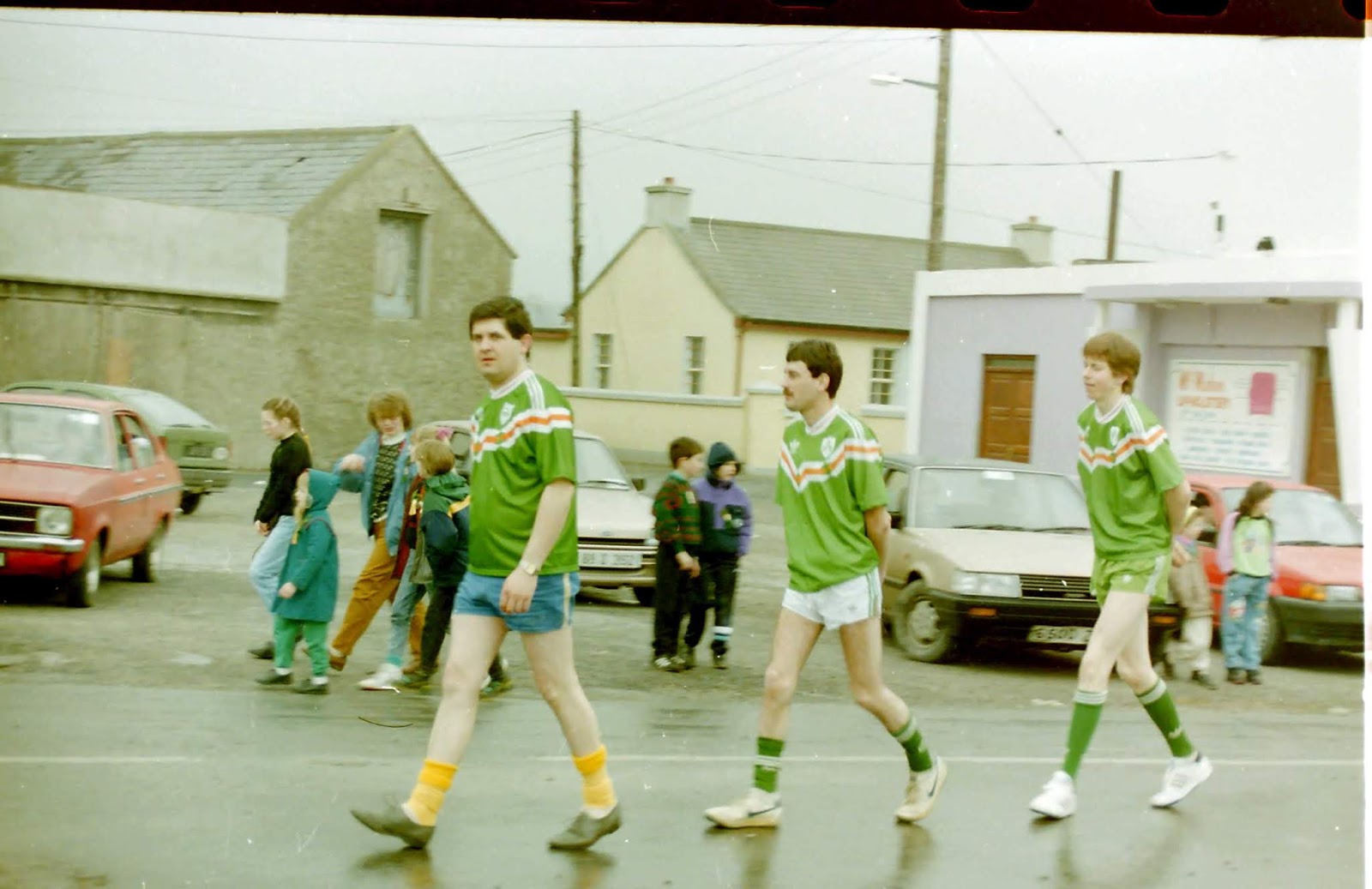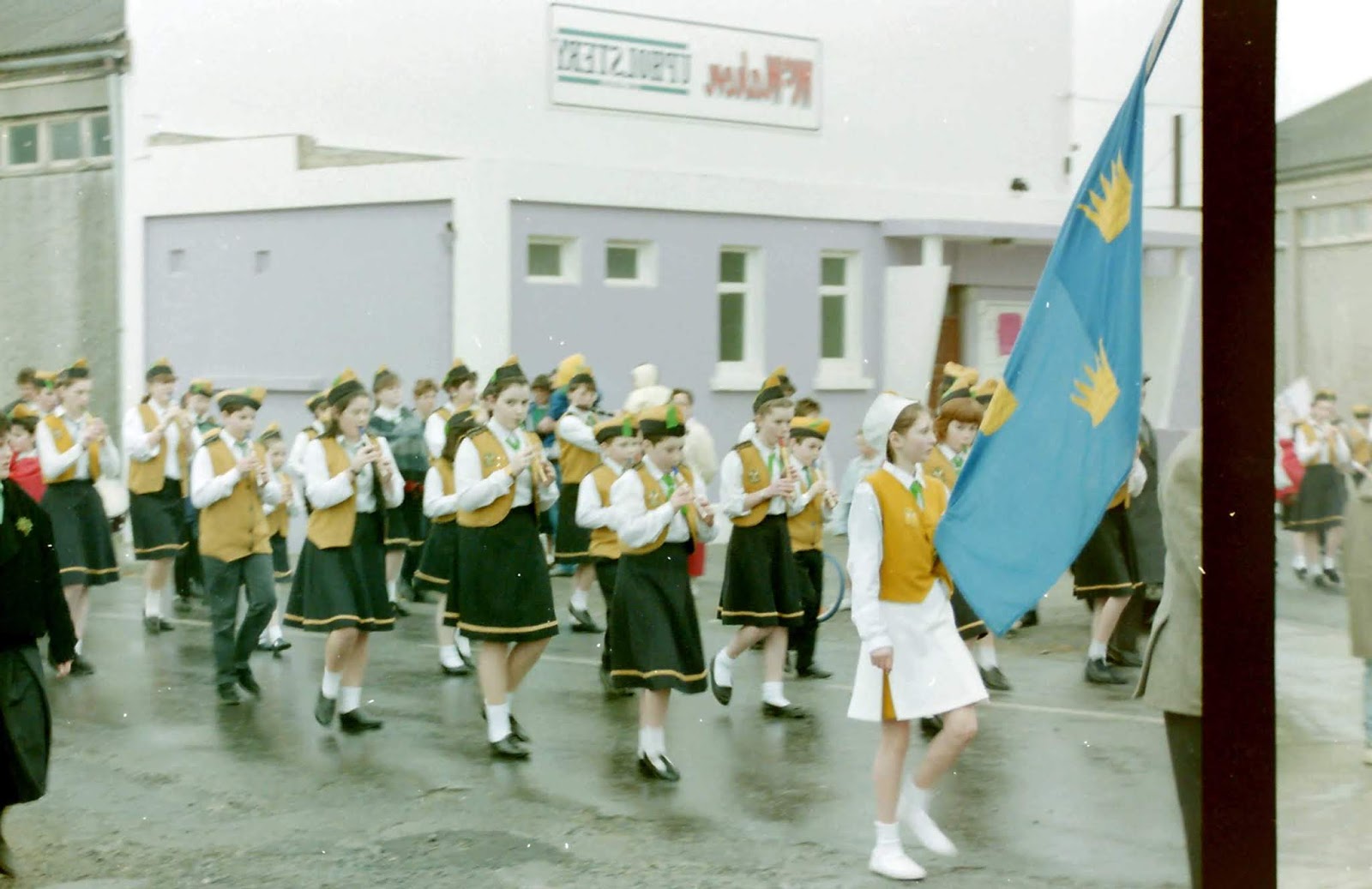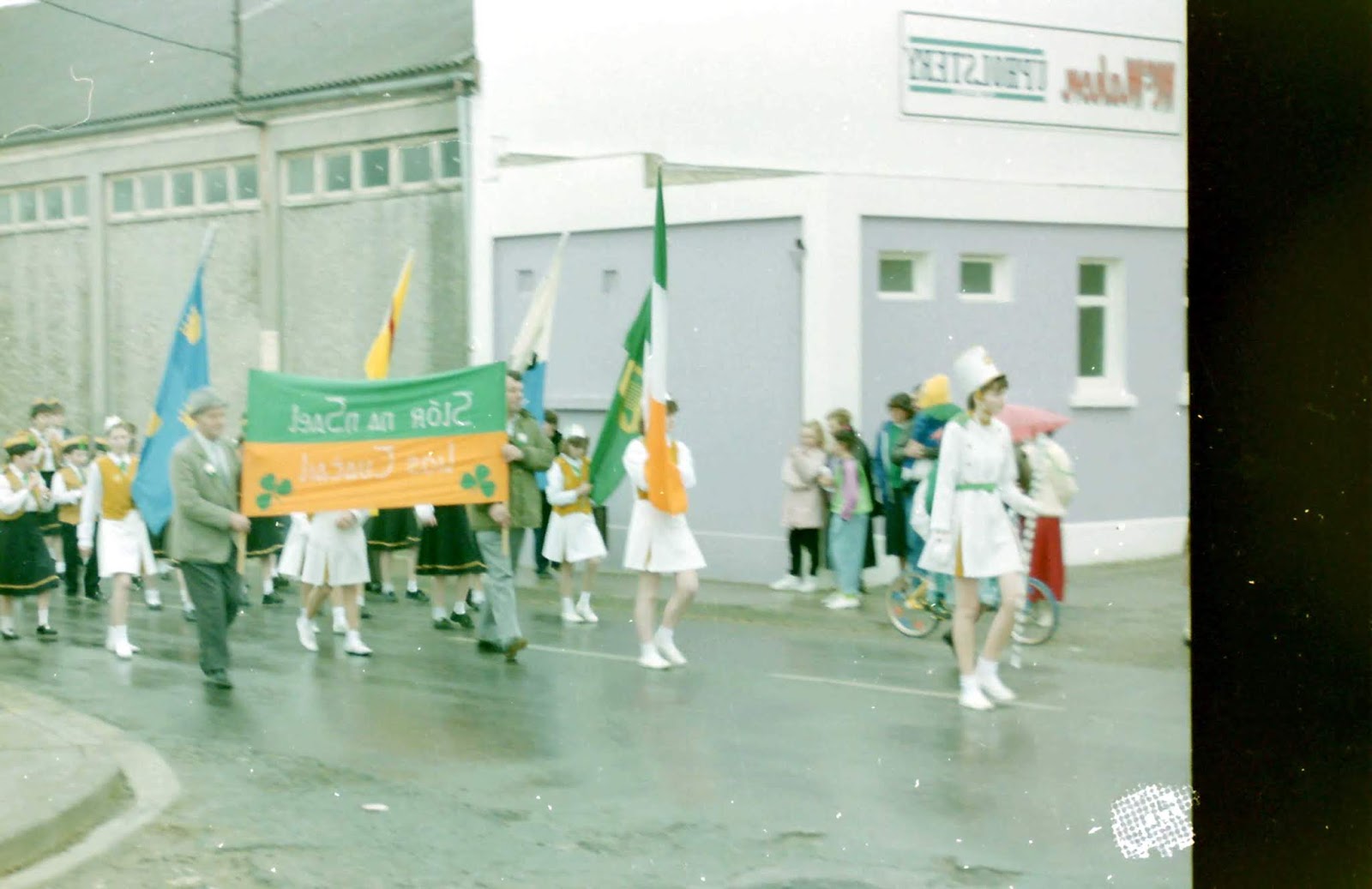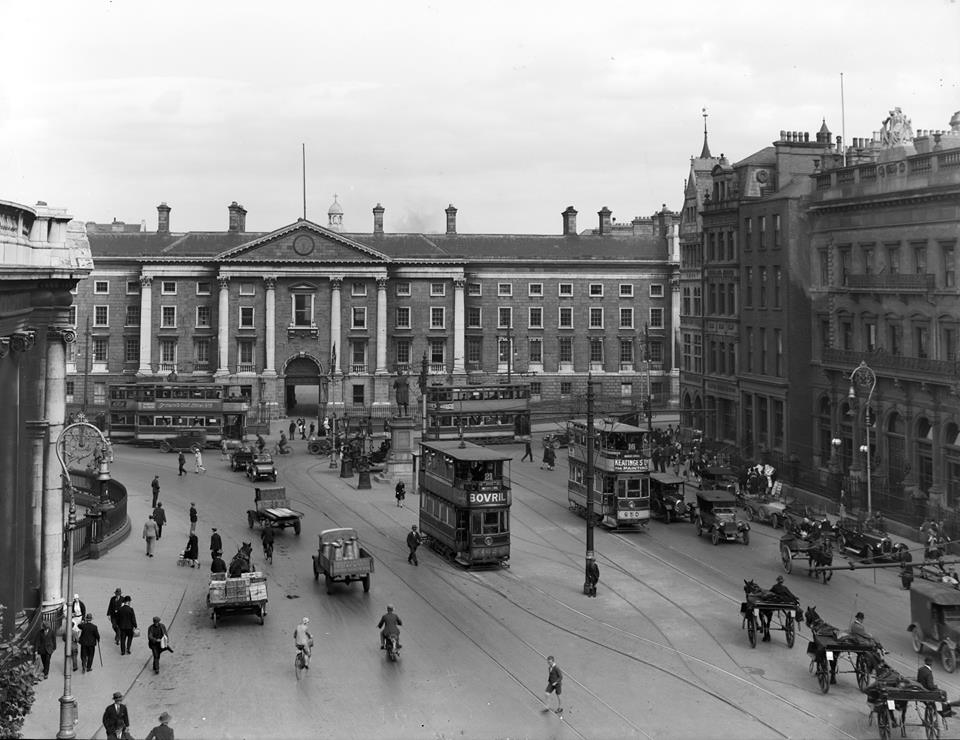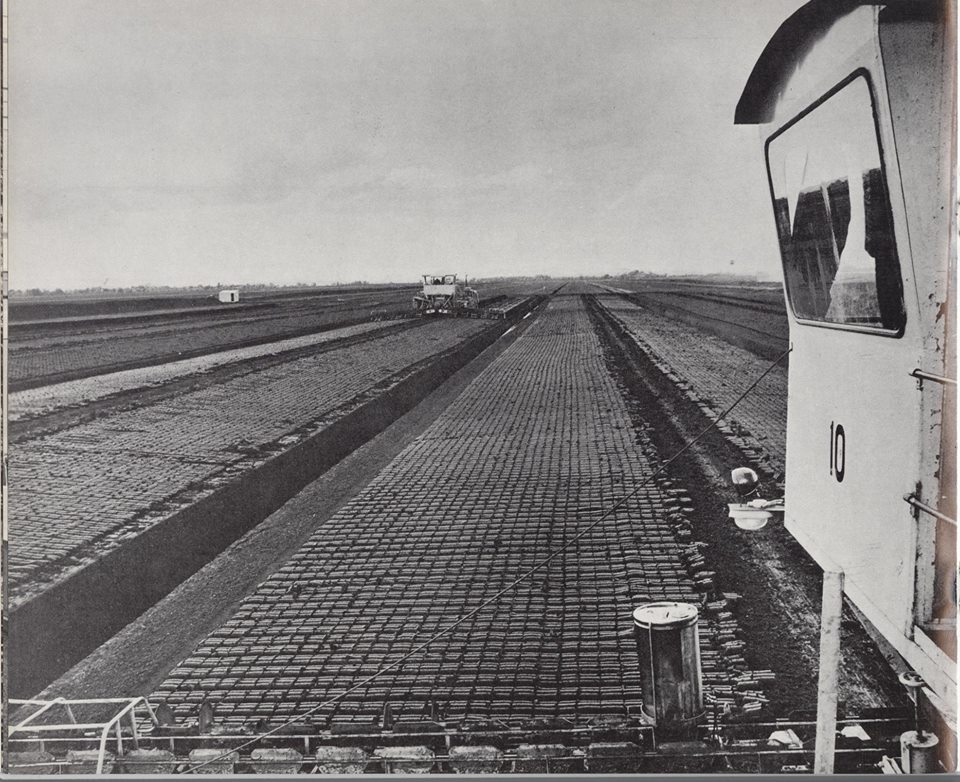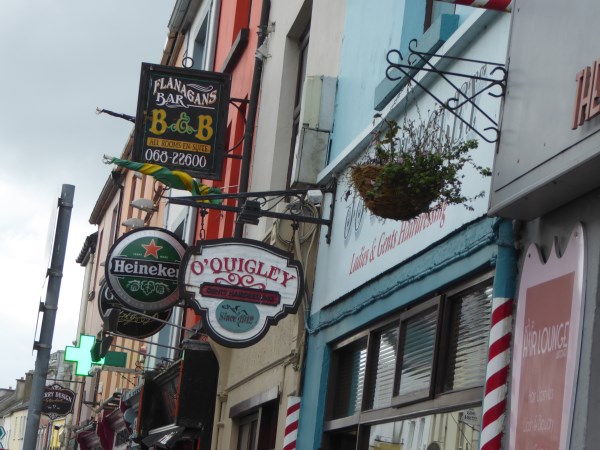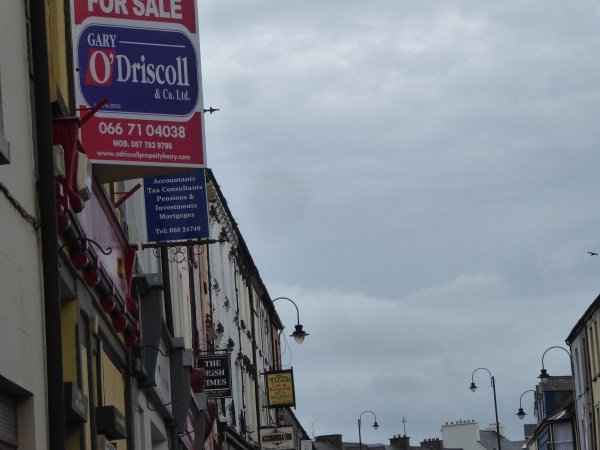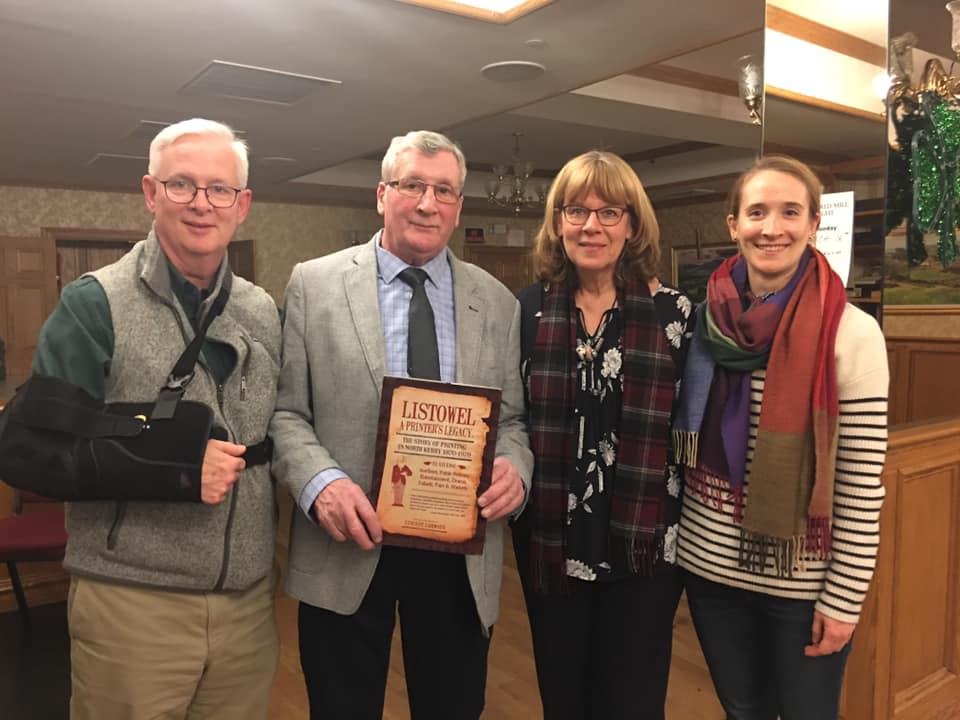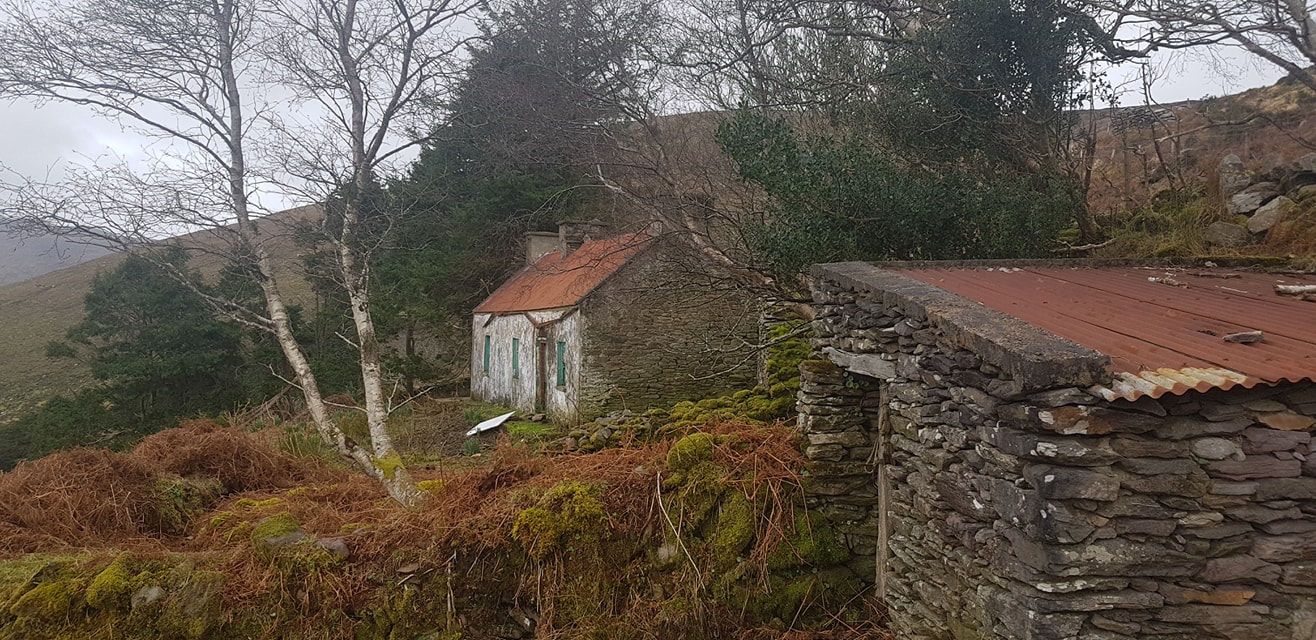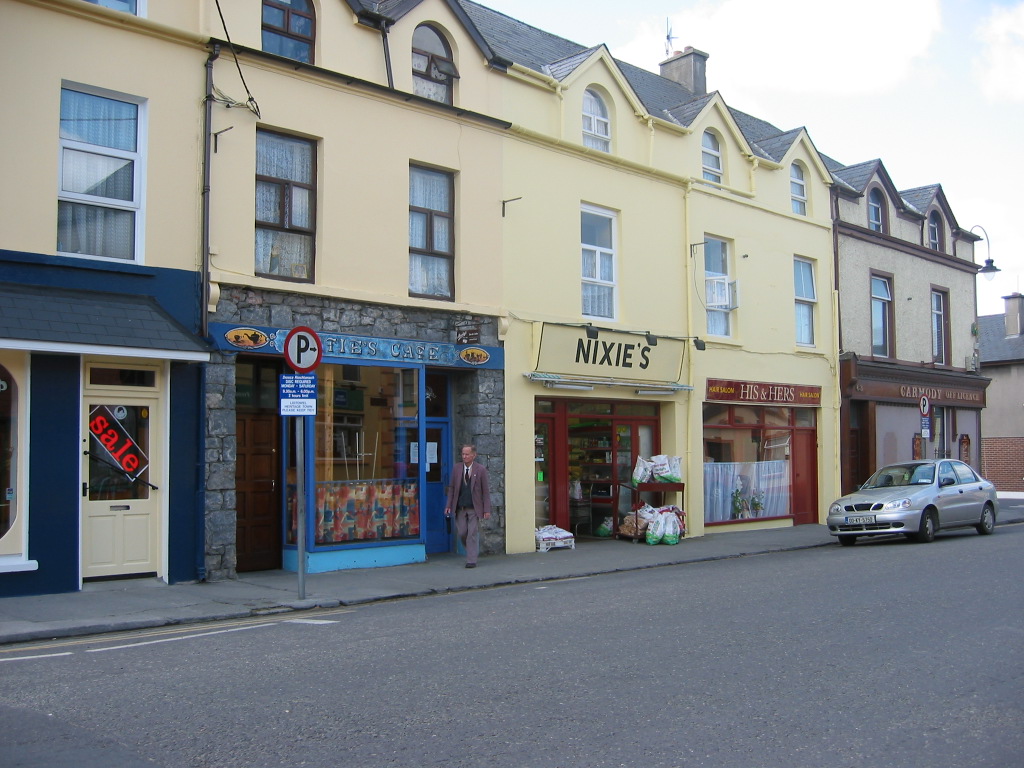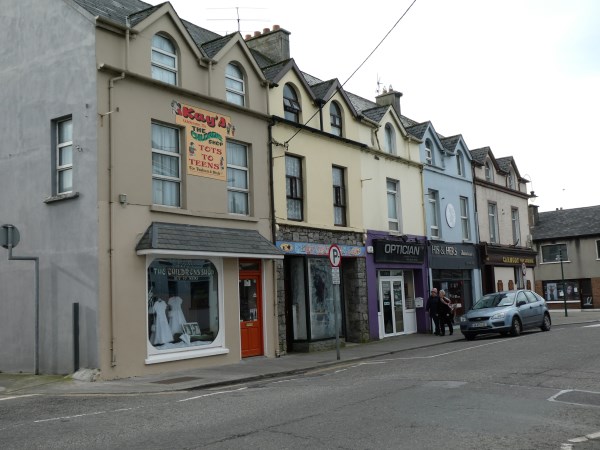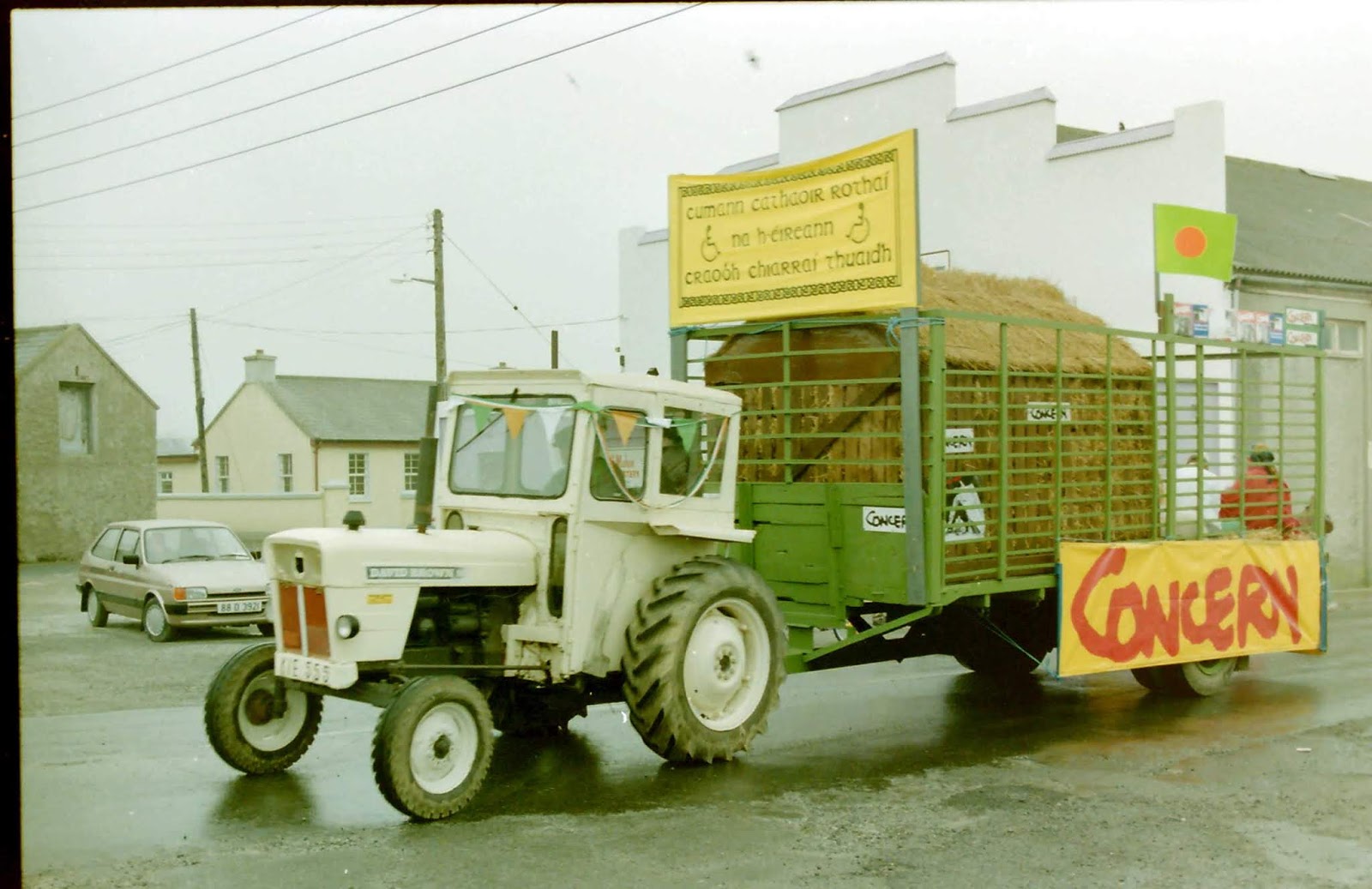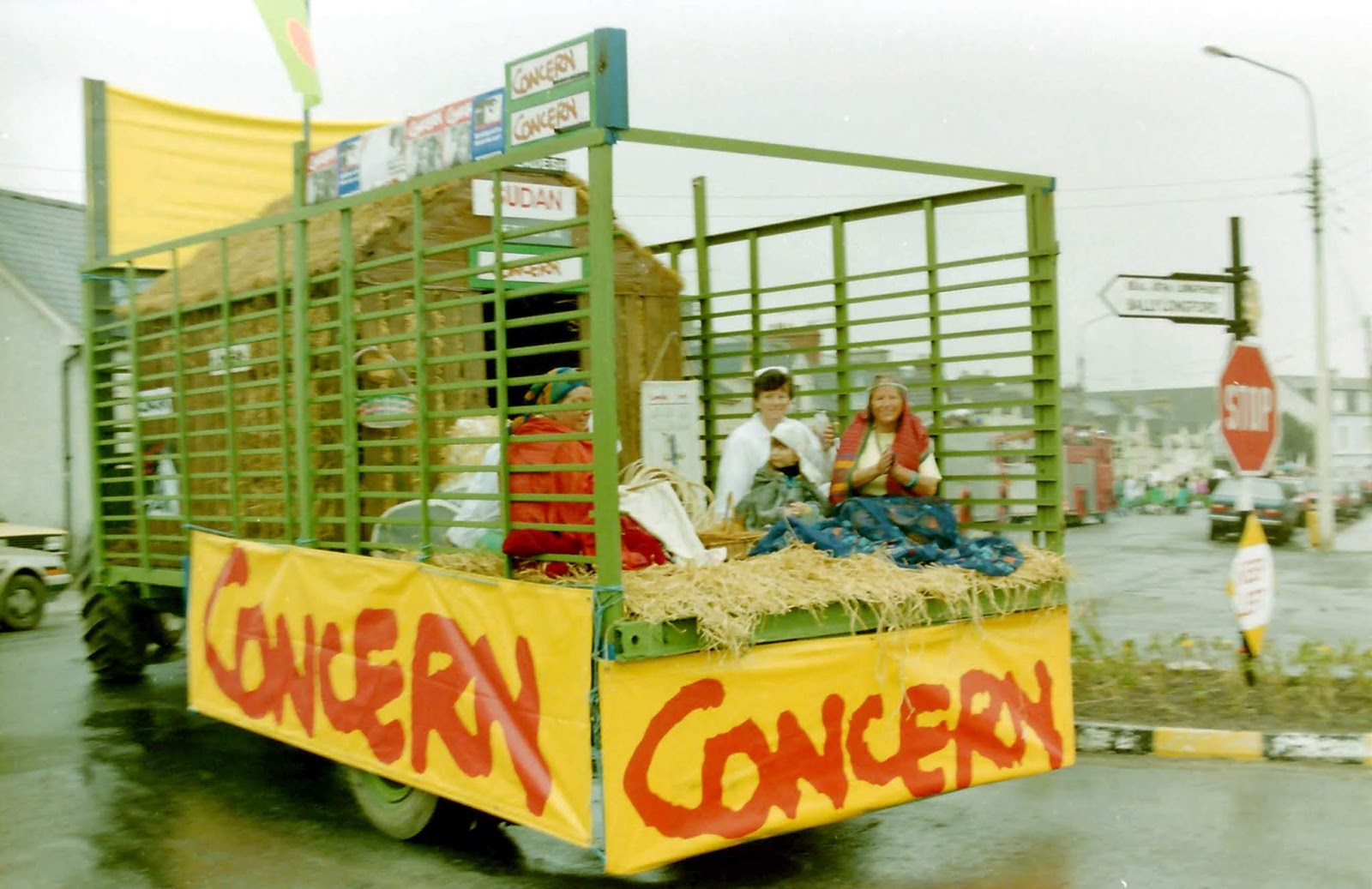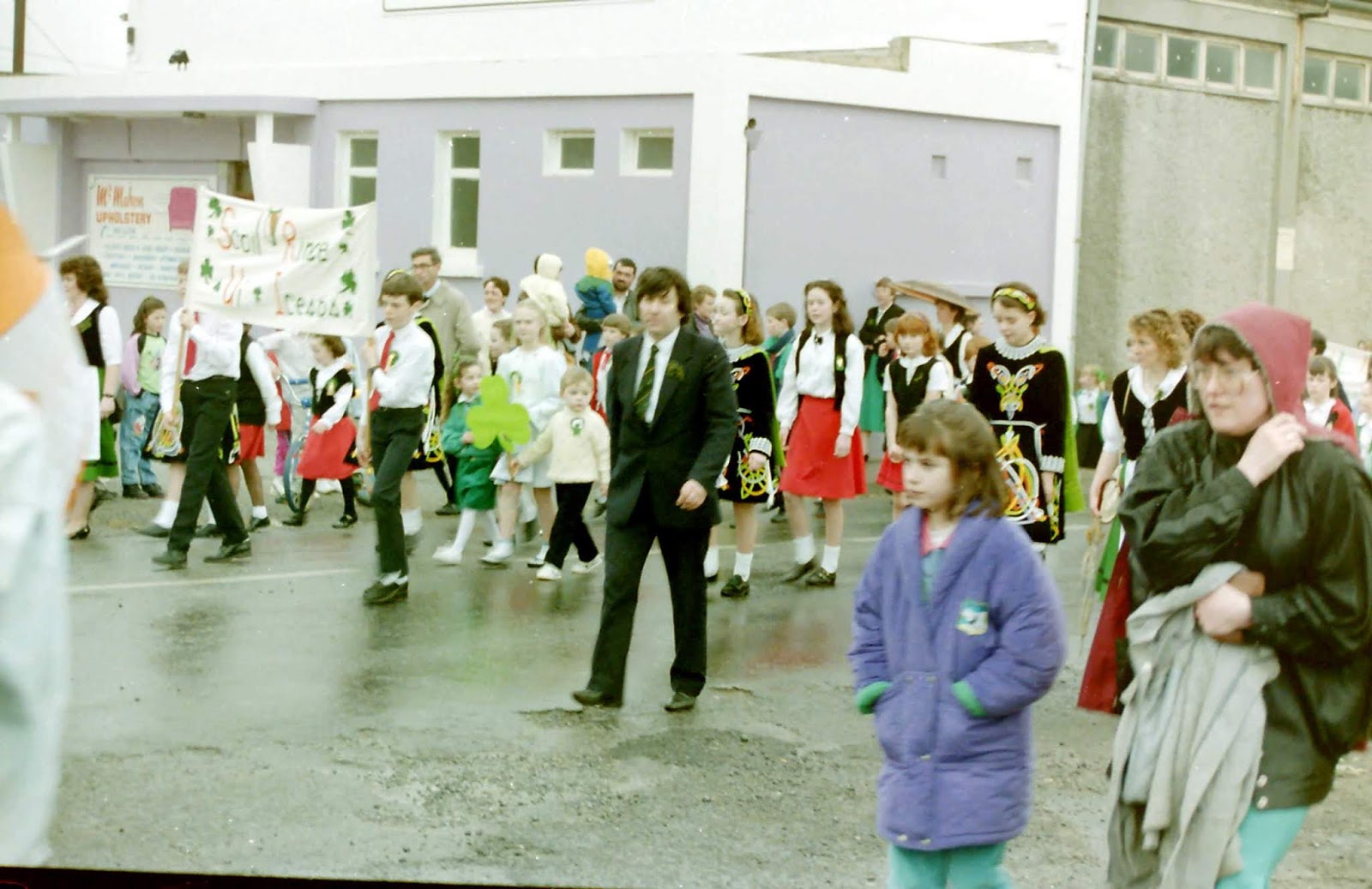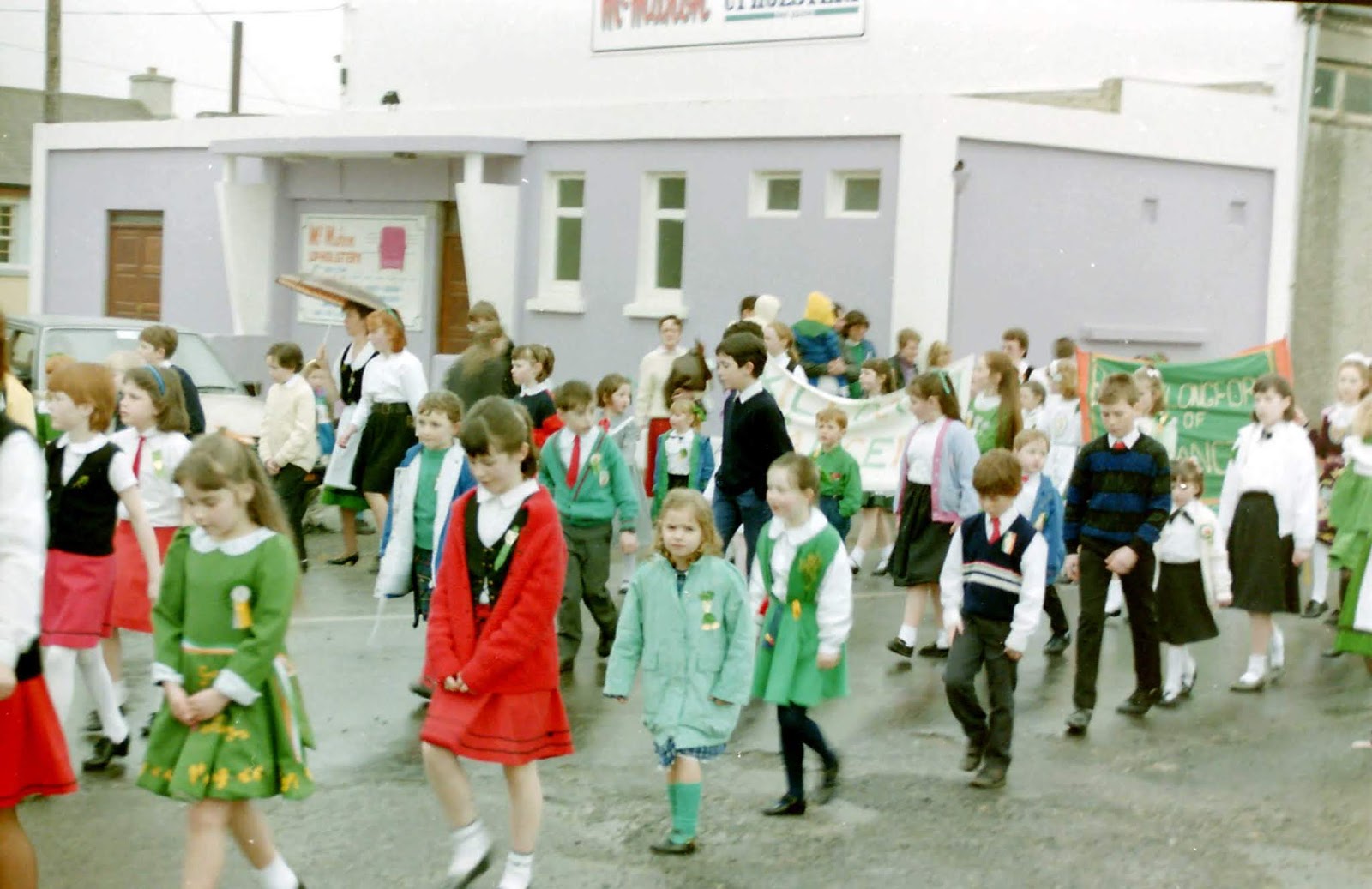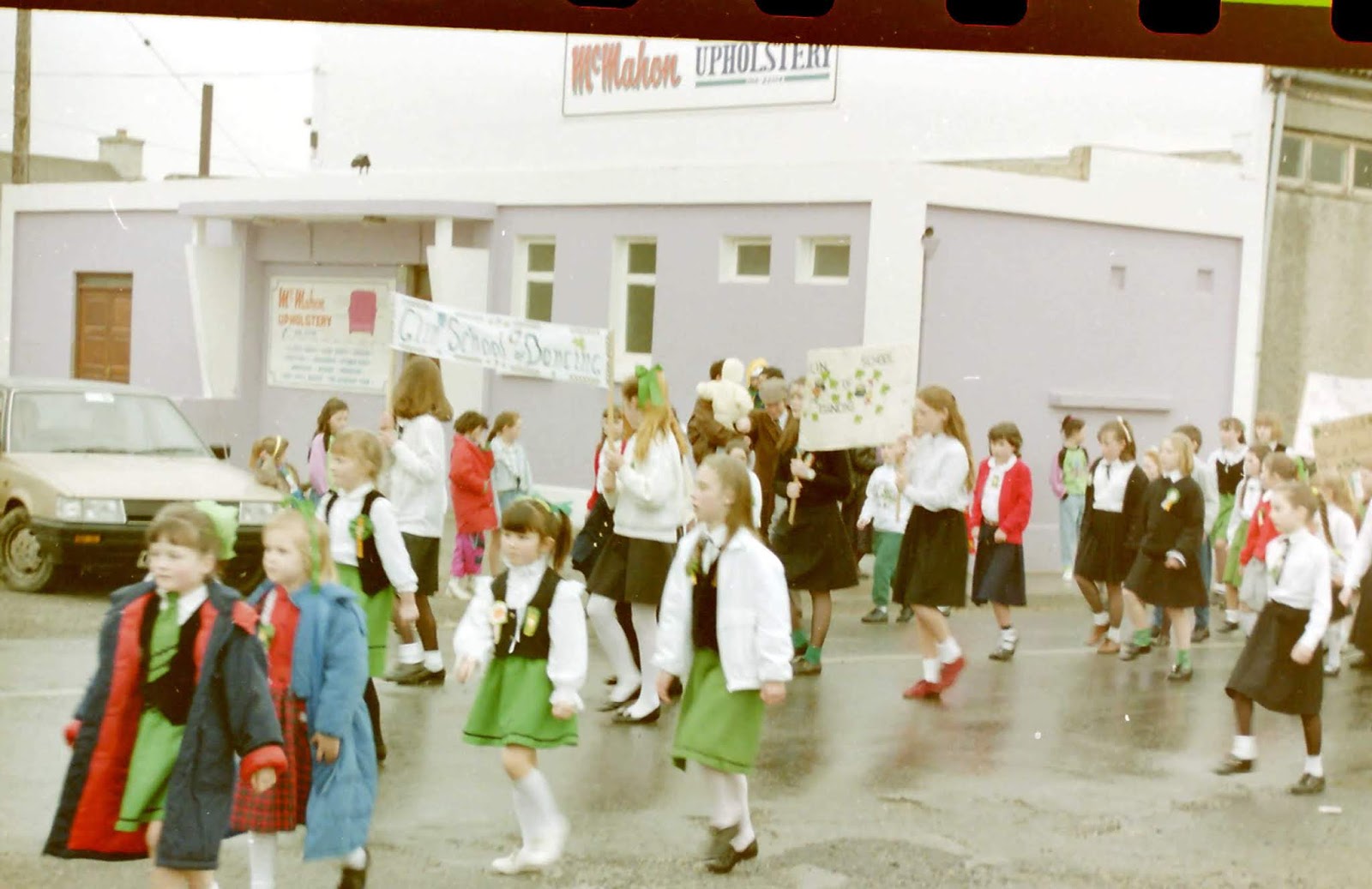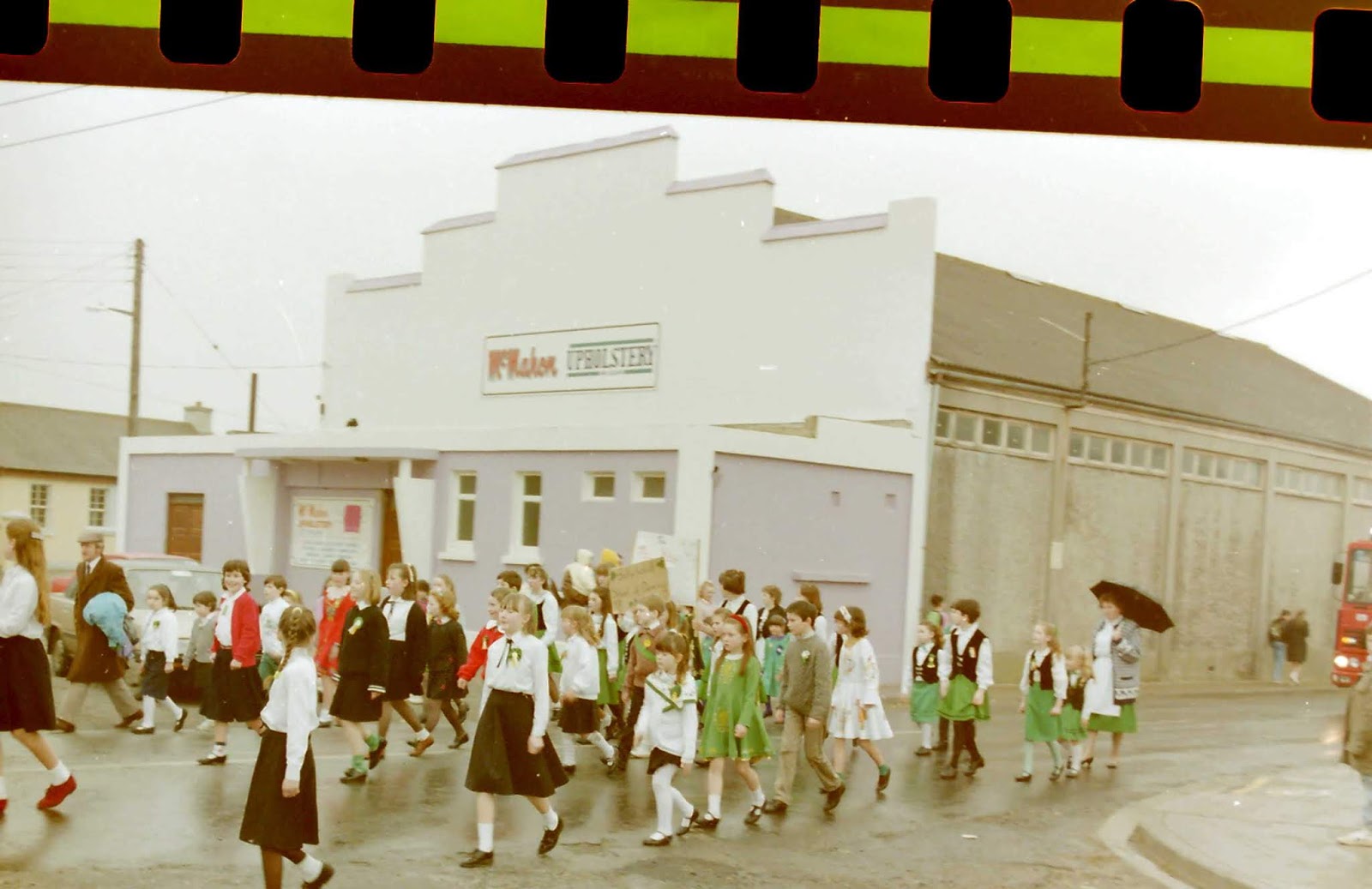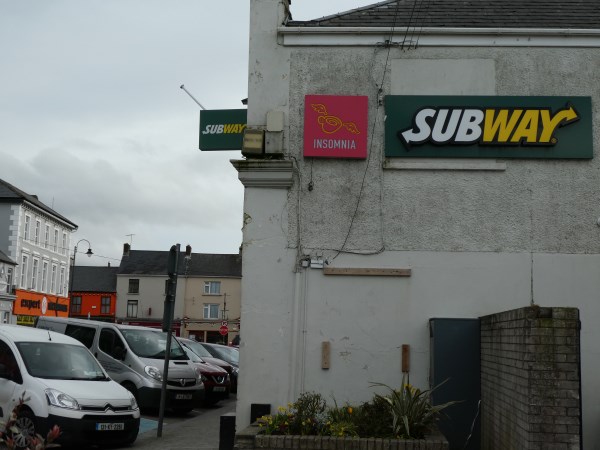Incomparable Stucco Detail at McKenna’s
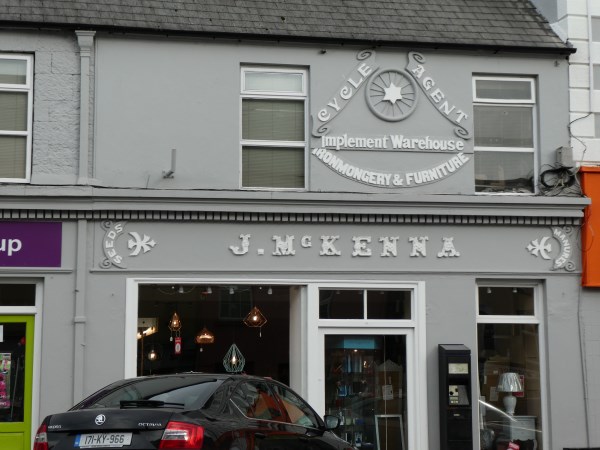
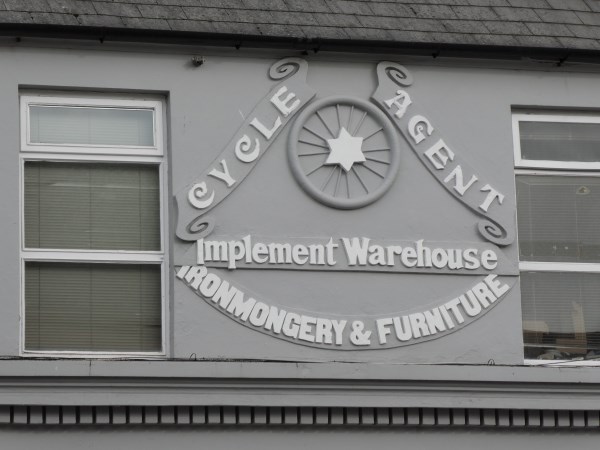
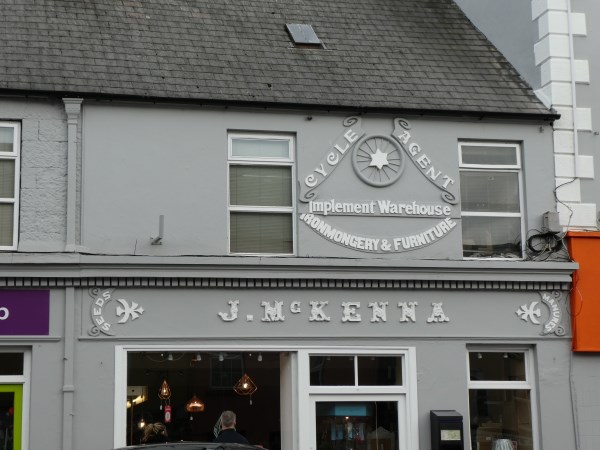
Understated timeless elegance well worth preserving
<<<<<<<<<<<
Knockanore Then and Now
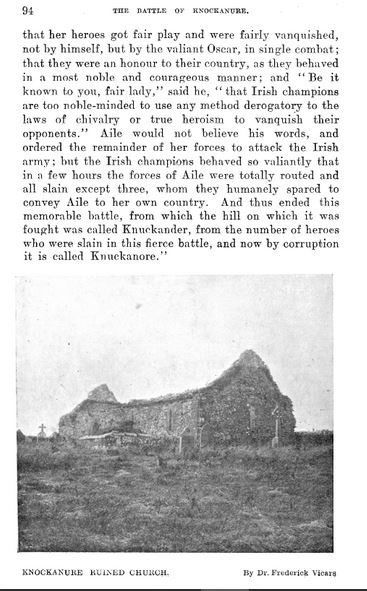
Photo; Kerry Archeological Magazine
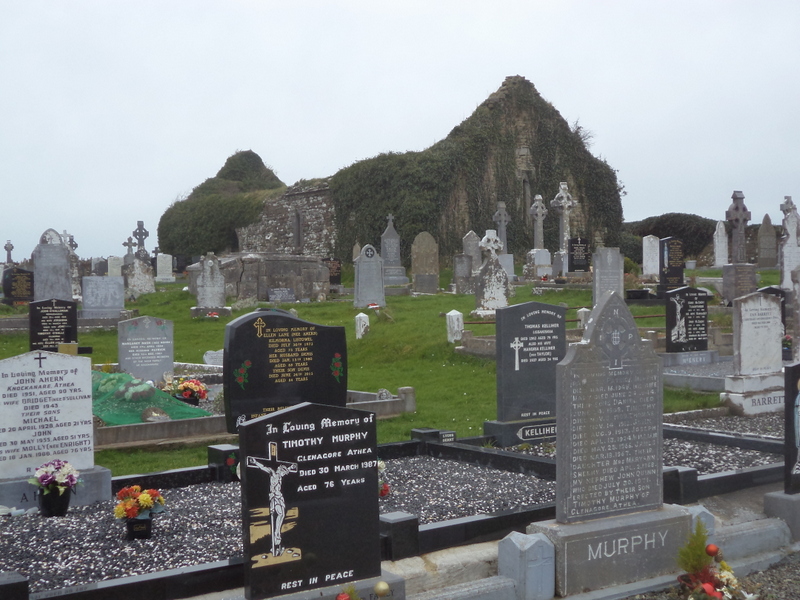
Knockanore Today
This lovely hill top burial place has within its confines the ruins of an old church. Since graveyards were originally churchyards it is quite common to see the remains of the old church still standing in today’s cemeteries. It is not usual to see graves within the wall of the church.
<<<<<
A Mattie Lennon Story with a Listowel Connection
BEGGARS CAN BE CHOOSERS
By Mattie Lennon
“Les bons pauvres ne savent pas que leur office est d’exercer Notre gererosite.” (The poor don’t know that their function in life is to Exercise our generosity.)
Jean-Paul Sarte.
Isn’t it wonderful that the stupid law (The Vagrancy (Ireland) Act 1847) has been found to be unconstitutional.
It reminds me of the first time I met the late John B.Keane in Grafton Street, in Dublin. He was being ushered Brown-Thomas-ward by his spouse. And cooperating fully: unusual for a husband. I accosted him to say thanks for his prompt reply when I had written to him shortly before requesting information for an article I was writing.
We were about thirty seconds into the conversation when an adult male with a lacerated face and looking very much the worse for wear approached me. The polystyrene cup in his outstretched hand proclaimed that he would not be offended by a donation.
I contributed 20p (I think). Ireland’s best-known playwright turned his back, (I’m sure he picked up the gesture in the Stacks Mountains as a young fellow) extracted a substantial amount and gave to the needy. I then thought that a man who had written about everything from cornerboys to the aphrodisiac properties of goat’s milk could enlighten me on an enigma, which I had been pondering for decades.
You see, dear reader, if I were talking to you on a public thoroughfare anywhere in the world and a beggar was in the vicinity he would ignore you as if he was a politician and you were a voter after an election. But he would home in on me. I don’t know why. Maybe, contrary to popular opinion, I have a kind face. Come to think of it that’s not the reason. Because I have, on many occasions, been approached from the rear. Many a time in a foreign city my wife thought I was being mugged. When in fact it was just a local with broken, or no English who had decided to ask Mattie Lennon for a small amount of whatever the prevailing currency was. Maybe those people have knowledge of Phrenology and the shape of my weather-beaten head, even when viewed from behind, reveals the fact that I am a soft touch.
However, a foreman gave a more practical explanation to the boss, on a building site where I was employed many years ago. The site was contiguous to a leafy street in what is now fashionable Dublin 4 and those from the less affluent section of society used to ferret me out there. Pointing a toil-worn, knarled, forefinger at me the straight-talking foreman, Matt Fagen, explained the situation to the builder, Peter Ewing, a mild mannered, pipe-smoking, kindly Scot. “Every tinker an’ tramp in Dublin is coming to this house, an’ all because o’ dat hoor……because dat hoor is here…an’ they know he’s one o’ themselves.”
I was relating this to John B. adding, ” I seem to attract them.”
To which he promptly replied;” (calling on the founder of his religion). You do.”
The reason for his rapid expression of agreement was standing at my elbow in the person of yet another of our marginalized brethren with outstretched hand.
So the best-known Kerryman since Kitchener left me none the wiser as to why complete strangers mistake me for Saint Francis of Assisi.
And salutations such as “hello” or “Good morning” are replaced by “How are ye fixed?”, “Are you carrying” and, in the old days, “Have you a pound you wouldn’t be usin’ “?
I do not begrudge the odd contribution to the less well off and I am not complaining that I am often singled out as if I was the only alms-giver. Come to think of it, it is, I suppose, a kind of a compliment.
Sometimes I say ; “I was just going to ask you”, but I always give something and I don’t agree with Jack Nicholson who says; ” The only way to avoid people who come up to you wanting stuff all the time is to ask first. It freaks them out.” Those unfortunate people are bad enough without freaking them out.
Of course there are times when it is permissible not to meet each request with a contribution. I recall an occasion in the distant, pre-decimal days when a man who believed that, at all times, even the most meagre of funds should be shared, approached my late father for five pounds. When asked ; ” Would fifty shillings be any use to you?” he conceded that yes, half a loaf would be better than no bread.
Lennon Senior replied; “Right. The next fiver I find I’ll give you half of it.”
Of course none of us know the day or the hour we’ll be reduced to begging. In the meantime I often thought of begging as an experiment. But I wouldn’t have what it takes. Not even the most high powered advertising by Building Societies and other financial establishments can restore my confidence, to ask for money in any shape or form, which was irreparably damaged when I asked a Blessington shopkeeper for a loan of a pound nearly forty years ago.
He said; I’d give you anything, son….but it’s agin the rule o’ the house.”
I wonder was he a pessimist. It has been said that you should always borrow from a pessimist; he doesn’t expect it back. Well recently I was in a restaurant when a work colleague texted me asking to borrow a small amount of money……he was seated two tables away.
As JFK said in his inaugural speech: ” If a free society cannot help the many who are poor, it cannot save the few who are rich.”
I don’t know about the rich but I have learned one thing about the poor;
BEGGARS CAN BE CHOOSERS.
<<<<<<<
An Gleann, Winners of the Street League in 1971
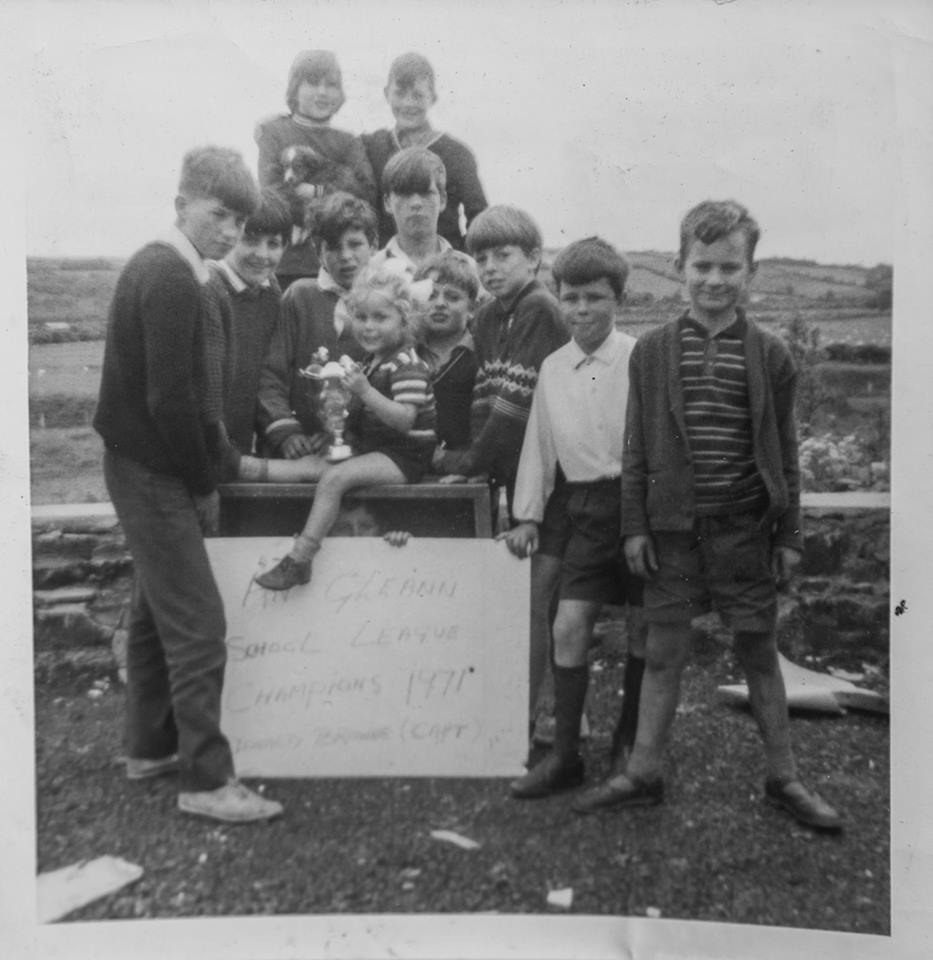
John Kelliher posted this old one on Facebook and here are the names as he had them with a little help from his friends.
Jerry Kelliher behind Tony O’Donoghue then John Driscoll , I think that’s Pete Sugrue alongside J D. Richard Connor back holding the pup and Tony Donoghue beside him.
Front Left Vincent O Connor, Eileen Kelliher holding the cup. I think that’s Fongo in front of Tony Donoghue
Bendigo next to Vincent and I nearly sure it’s Donal Brown next RIP. Donal Brown was captain.














